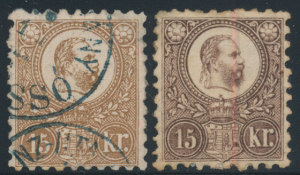If philately were an academic discipline, there would be several basic elements of understanding that stamp majors would have to master before moving to graduate level courses. High on this list would be a basic understanding of printing methods. There are many methods of transferring ink from plate to paper (and, now, even the word "plate" is far too restrictive for what amounts to a high speed ink spraying process that looks to the paper receiving it more like a car wash than a printing process), but the major printing processes all boil down to two major types-engraving, where ink is squeezed from recessed lines on the plate onto the paper, and litho-typography, in which a flat layer of ink is pressed onto the sheet.
Engraving was the preferred method of printing stamps in the early days of philately as it was a far harder process for counterfeiters to imitate convincingly. But the major technological advances in printing have all been in complicated refinements of litho-typography and today the major reason stamps are not counterfeited is that postage rates are so low and larger mailers can only use postage meters so that stamp use is way down. The easiest way to see the difference between engraving and lithography is to buy yourself a set of the first and second issues of Hungary. These are identical stamps except that for the first set the plates were engraved and for the second they were lithographed. As the picture above indicates the differences are dramatic.
Engraving was the preferred method of printing stamps in the early days of philately as it was a far harder process for counterfeiters to imitate convincingly. But the major technological advances in printing have all been in complicated refinements of litho-typography and today the major reason stamps are not counterfeited is that postage rates are so low and larger mailers can only use postage meters so that stamp use is way down. The easiest way to see the difference between engraving and lithography is to buy yourself a set of the first and second issues of Hungary. These are identical stamps except that for the first set the plates were engraved and for the second they were lithographed. As the picture above indicates the differences are dramatic.

